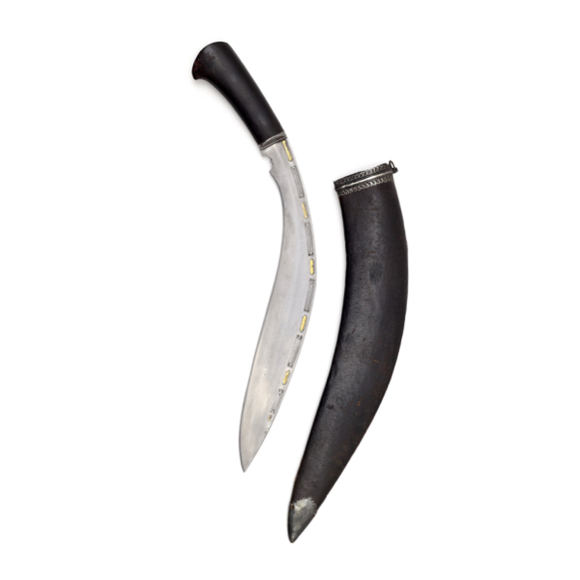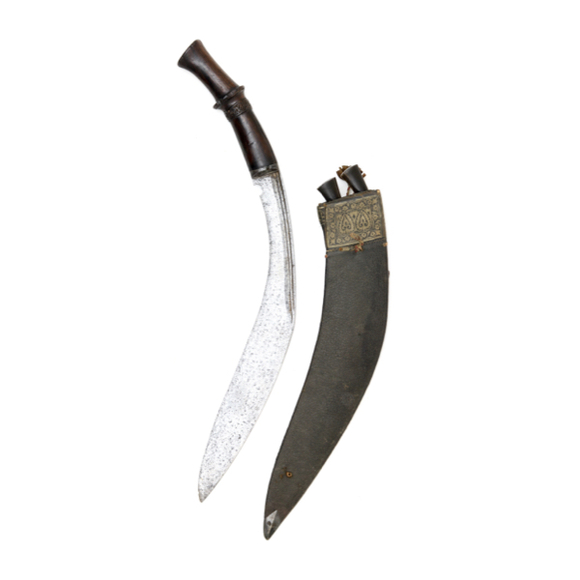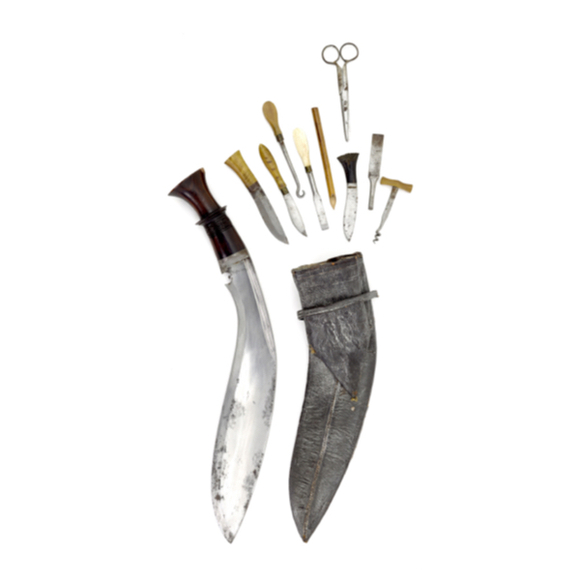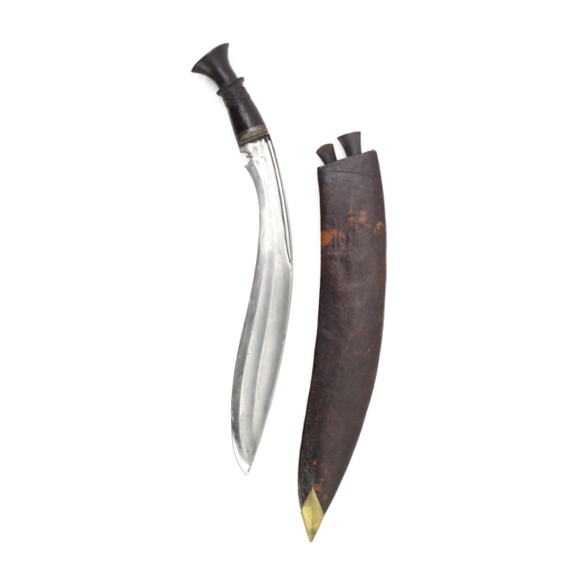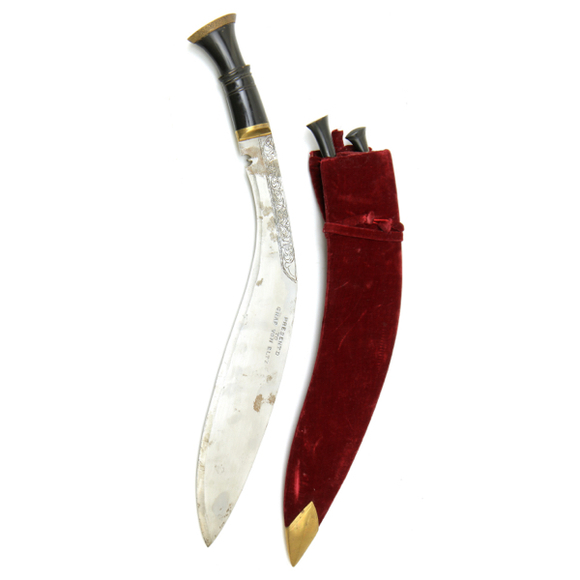Language: Nepali
Source: In common use
Description
Sirupātē (सिरुपाते) is a word commonly used to describe a long, slender version of a Nepalese khukurī.
The word sirupātē (सिरुपाते) appears in Ralph Lilley Turner’s A Comparative and Etymological Dictionary of the Nepali Language of 1931 and is described as:
"सिरु-पाते siru-pāte,adj. Long and slender like a blade of siru" 1
Siru (सिरु) is the name of a local plant. Pātē (पाते) means "leaf".
Turner gives the meaning for siru (सिरु) as the name of two varieties of grass or reed:
1. Imperata arundinacia (= khar-siru, used for thatching);
2. Imperata arundinacia var. latifolia.
(Another possibility may be Hypoxis aurea which is called ban siru (बन सिरु) locally.)
 A sirupātē khukurī of the early 1800s.
A sirupātē khukurī of the early 1800s.
Author's collection.

A sirupātē khukurī with golden bolster.
Listed at Mandarin Mansion.
Notes
1. Ralph Lilley Turner; A Comparative and Etymological Dictionary of the Nepali Language. Published by Kegan Paul, Trench and Trubner Co Ltd., London, 1931. Page 609.

